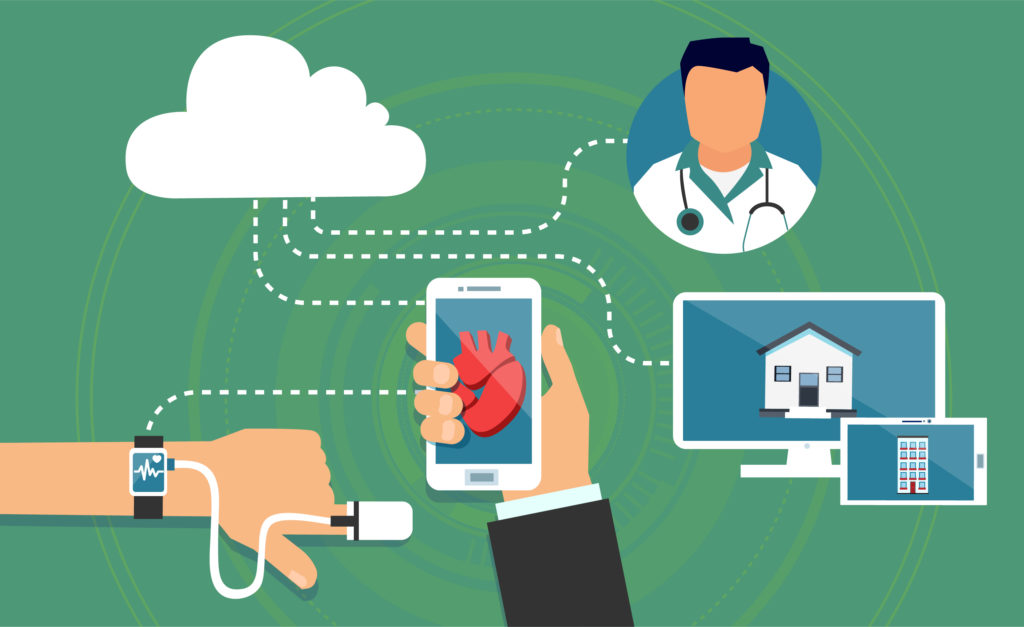Digital Therapeutics: What Are They and Why Do They Matter?
Digital therapeutics are customized, tech-based tools that use specialized software to help treat, manage or prevent a broad spectrum of physical, mental and behavioral health conditions. They can be characterized as any approved software-based tool that treats a health issue.
In a country where over 130 million people suffer from at least one type of chronic illness, digital therapeutics have emerged as a game-changing resource to help patients properly manage their conditions, while seamlessly integrating with their existing healthcare plan. They provide supplemental, though critically important, clinical treatment support.
Digital therapeutics are generally designed, created, and implemented by healthcare providers with the help of in-house or third-party developers.
“Digital therapeutics have emerged as game-changing resource to help patients properly manage their conditions, while seamlessly integrating with their existing healthcare plan.”
Functions of Digital Therapeutics
The Digital Therapeutics Alliance, along with various thought leaders and care providers within the digital health landscape, have identified five essential functions of digital therapeutics, including:
- Enhance and Support Current Medical Treatments
- Provide Patients, Providers, and Payers with Novel Therapy Options for Unmet Medical Needs
- Be Used Independently or in Conjunction with Other Therapies
- Reduce Reliance on Certain Pharmaceuticals or Other Therapies
- Integrate into Medical Guidelines and Best Practices
Each digital therapeutic must fulfill one of the above needs in order to satisfy regulatory compliance and be deemed viable for clinical use. Within these parameters, digital therapeutics have evolved to assist in the treatment, support, prevention and management of a wide array of conditions.
Like What, For Example?
Since their arrival to the clinical landscape, digital therapeutics have been developed for the intervention in conditions such as:
- Asthma and COPD
- ADD and ADHD
- Substance Use and Disorder
- Sleep Disorder
- Diabetes
- Hypertension
- Obesity
- Behavioral Health Issues
- Chronic Back Pain
- Concussion
- Neurological Disorder
- Medication Management
There are more and more digital therapeutics being developed each year, and each must meet stringent guidelines, not unlike the medication approval process. Each digital therapeutic must be designed with the goal of either addressing a medical condition; managing or preventing a medical disorder or disease; optimizing medication (an individual medication or class of pharmaceuticals); or treating a medical disease or disorder.
Digital Therapeutics and Digital Health: What’s the Digi-fference?
Digital therapeutics is only one component of digital health (an FDA-approved term used to describe all technologies that engage patients for health-related purposes). They exist within the larger digital health space alongside a full array of technologies that assist patients through different phases of their healthcare process, which include:
- Mobile Health (Fitness Trackers, Nutrition Apps, Etc.)
- Health Information Technology (Electronic Medical Records Systems, Electronic Prescribing and Order Entry, Etc.)
- Devices, Sensors, and Wearables (Wearable and Wireless Devices, Biometric Sensors, Etc.)
- Personalized Healthcare (Patient-Reported Outcomes, Predictive Analytics, Clinical Decision Support, Etc.)
- Telehealth (Telemedicine, Virtual Visits, Remote Patient Monitoring, Remote Care Programs, Etc.)
The FDA has pointed to digital therapeutics and other elements of digital health as a tool that can empower consumers to make better-informed decisions about their own health and provide new options for facilitating prevention, early diagnosis of life-threatening diseases, and management of chronic conditions outside of traditional care settings.

The Future Is (More) Digital
Digital therapeutics have long moved beyond peripheral “nice-to-haves” and have become an integral part of the comprehensive care, management and prevention of an endless array of disease states. If you’re not buying it, that’s ok, because others certainly are. Investments in digital therapeutics have climbed considerably since their arrival, and to date, have totaled over $1.5 billion. With investments in overall digital health forecasted to reach over half a trillion dollars over the next five years, it’s a safe bet that digital therapeutics will be coming along for the ride, continuing to evolve to address more complex care needs.
DTx-Cellent: The Enduring Benefits of Digital Therapeutics
Digital therapeutics have come to be a critical link in the digital health chain. Not only do they provide patients disease care, support, information and management with next-level consistency, they also help to empower patients in being participants in their own care journey. They represent the pinnacle of customized, tech-based health care delivery, and the next evolution in treatment.
[digital therapeutics] represent the pinnacle of customized, tech-based health care delivery, and the next evolution in treatment.
On a clinical level, digital therapeutics deliver patients increased assistance and support as they endeavor to manage their difficult (often traumatic) conditions; on a human level, they let them know that they can be active participants in their own care.
Bx Meets DTx
GoMo Health has readily embraced digital therapeutics as a means of providing our clients’ patients with the comprehensive care, support and assistance they need in managing their various health issues. Our BehavioralRx® methodology dovetails perfectly with the goals and applications of this area of care. Contact us today to figure out how we can help you leverage the exciting innovations in DTx.
Dive into BehavioralRx®








Find Us Online